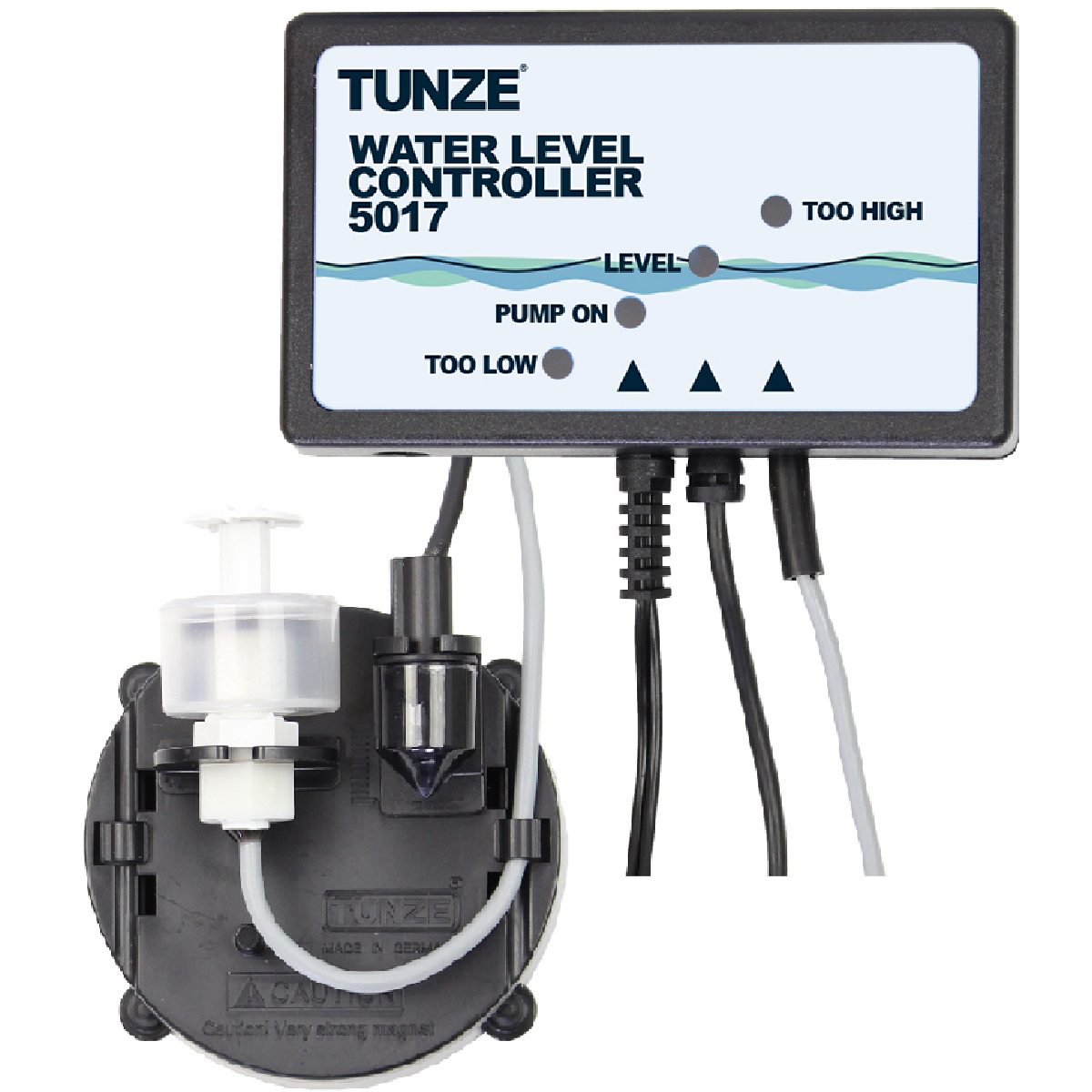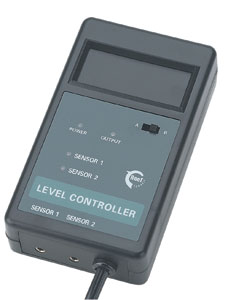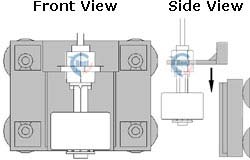Level Controller Survey, Part II
My own search for a level controller tried to balance safety, reliability, and affordability. I had the following requirements:
1) Dual Float Switch (or Optical Sensor and backup Float Switch)
2) Level Switch operates on a low voltage circuit.
3) Switches need to be sealed (submergible).
4) Needs to run a low flow pump to maintain a more consistent water level, reduce splashing, and is more suitable for Kalk drip rates.
5) Needs to have a stable mount that does not use suction cups.
The following are the products I considered:
Tunze Osmolator Universal 3155 - US $195
This Level Controller includes a very accurate optical sensor for primary level control, a float switch for redundancy, modular mounting brackets and visual and audible alerts and other electronic features. It is as well regarded as it is expensive. The integrated ~12 gpm pumps can be replaced for around $20, which makes the overall package attractive. The Tunze directions indicate that the optical sensor needs to be kept clean and should not be operated in the path of Kalk drip concentrate.
Autotopoff.com's Optical Sensor w/ Float Switch Backup - US $144 (pump not included)
Although lacking alerts and overfilling of the Tunze 3155, this Level Controller also includes a very accurate optical sensor for primary level control, and a float switch for redundancy for about $50 less. The mounting bracket can be custom configured, as well as several other options from this manufacturer. Sensor/Switches are hardwired into the controller box. Outlet for 3rd party pumps. They also make $50 dual float switch models in either tank or sump mount configurations, complete with splash/snail guards. I have had the Dual Tank Mount operating on my 20g QT very reliably for the past eight months. "Made in USA".
Reef Fanatic Level Controller - US $80 (pump not included)
Dual float switch controller that can operate in two modes: Redundancy or Run Dry protection. Visual indicators of pump and switch activity. 10 second Relay Overfill feature. Suction cup used on mounts brackets that are otherwise sturdy. Plugin switches for easy replacement. Outlet for 3rd party pumps.
Spectrapure Ultra-Precise Liquid Level Controller II - $240 (integrated peristaltic pump)
Truly the Cadillac of Level Controllers. The last version of this expensive product used dual float switches (albeit with suction cup mounts) that plug into a peristaltic pump. It is unclear what type of sensor(s) the new version has, but the pump has been improved and has some interesting features. The pump itself is advertised as virtually maintenance free, can pump liquids up to 50 feet in height, is Kalkwasser and Chemical safe, and has an adjustable "ON TIME" (Overfill) AND flow rate. The unit is fairly compact since the controller and the pump are integrated, and comes with an outstanding 5 year warranty. Plugin Switches for easy replacement.
---
Other Options
There are a few others I did not consider even though they are worth mentioning. JBJ makes an affordable $85 Level Controller that is very similar to the Reef Fanatic offering, but comes with modular mounting straps instead of suction cup mounts. Aquahub.com offers several DIY models for those who wish to build one for even less money. Spectrapure's far less expensive Power Liquid Level Controller uses a single air pressure activated switch, and the GAP Level Loc is a switch/float/solenoid solution for those brave enough to connect a RODI system directly to the sump.
Interesting to note that Aquahub warns that the top of their float switches should not be submerged, and they sell a separate $2 tube and adapter product to protect the switch from moisture. Other manufacturers appear to inject sealing material (Silicone?) into the top opening of the float switches to seal the wires.
---
Next we will look at my choice and see how it stacks up.








 Reply With Quote
Reply With Quote















Bookmarks